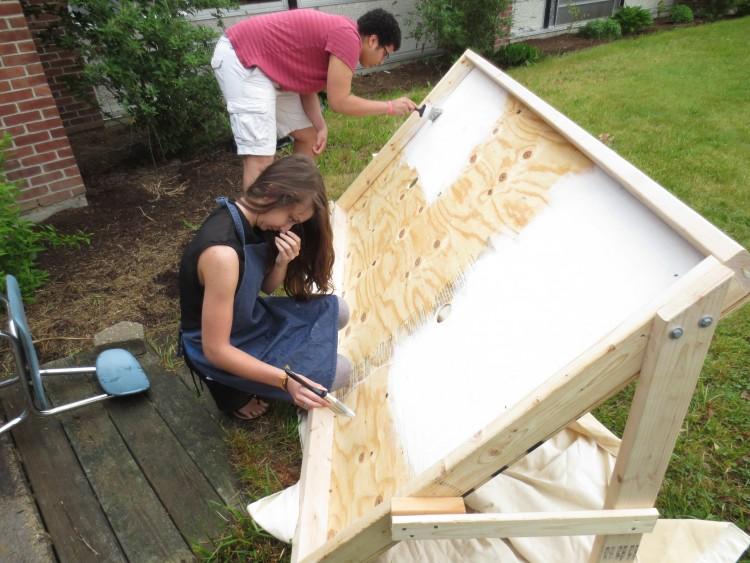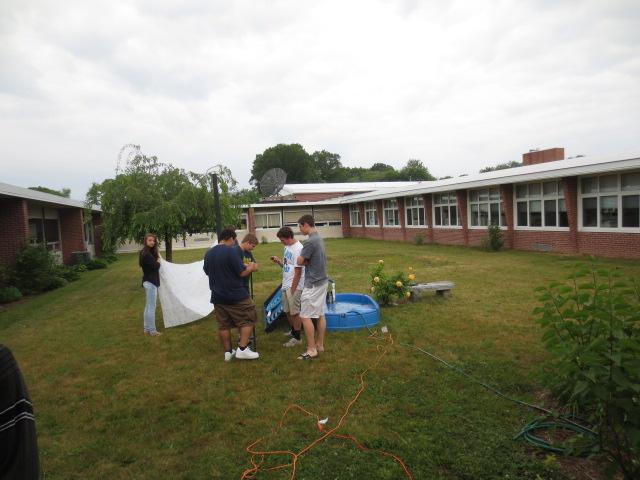Written by Billy Fanning |
Photos by Kayla Maloney & Mr. Baier |
In The Morgan School’s STEM Physics class (Science Technology Engineering and Math ), students came up with an idea to use the sun’s thermal energy to heat a room or even a pool. The class simply used hoses with controlled temperatures through a radiator or in this case, a solar collector. The absorption of sun from the black background heated up the hose. Students then cycled water through it constantly replacing the water through the heater making the temperature of the pool rise.
The design is an angled wooden stand at 45*, which students found through research was the most efficient angle to absorb as much light as possible throughout the day particularly for our latitude above the equator. The stand is painted black, and since black is the absence of light, it means all spectrums of visible light are absorbed into the color. This also means the energy is fully absorbed. While the stand heats, the hoses spiraled on the stand heat up and release the energy into the water flowing through it at a slow rate to balance the heat over the cooling of the water.
Students also used this method to cool the science room during the summer. Using the same process, they pump cold iced water from a bucket through a radiator, technically called a heat exchanger, to cool the metal tubes and thus the metal fins. Then they made a box that would channel the air through the radiator . Then the heat from the air is absorbed because the air will try to match the kinetic energy of the metal lowering it. This is a basic air conditioner.
Some major benefits of these designs are that it is very inexpensive to build and cheaper to operate considering it only requires low flowing water pumps. There is no power bill to pay. However, the solar heater will only work efficiently enough in the summertime when the sun is in the sky more often and closest to the earth. No one will be able to “crank” the heat for it’s up to science as to how hot or cold it is. And finally since it takes up more space than a normal heater, the equipment will be outside in the yard.



